Decoding ICD-10 NIH Stroke Scale: Precision in Neurological Care

Uncover the intricacies of the ICD-10 NIH Stroke Scale. Enhance your neurology knowledge for precise patient care and improved outcomes.
In the complex landscape of healthcare, where precision and clarity are paramount, the ICD-10 NIH Stroke Scale emerges as a critical tool, shaping the narrative of patient care. This article delves into the intricacies of this standardized assessment, a cornerstone in the world of neurology and stroke management. From deciphering the International Classification of Diseases (ICD-10) coding system to navigating the nuances of the NIH Stroke Scale, we embark on a journey that explores the intersection of medical diagnostics and compassionate patient care. Join us as we unravel the significance of these essential components, bridging the gap between clinical precision and improved outcomes in the realm of healthcare.
Top 10 Points about ICD-10 NIH Stroke Scale :
- Understanding the Significance of ICD-10 in Stroke Diagnosis
- Exploring the Role of NIH Stroke Scale in Neurological Assessment
- Demystifying ICD-10 Coding for Effective Healthcare Communication
- Impact of Accurate ICD-10 Coding on Stroke Patient Management
- Comprehensive Guide to Utilizing NIH Stroke Scale in Clinical Practice
- Ensuring Compliance: ICD-10 Coding in Stroke Cases
- Unveiling the Link Between ICD-10 and Improved Treatment Planning
- NIH Stroke Scale: A Tool for Objective Neurological Evaluation
- Navigating Challenges: ICD-10 Coding in the Context of Stroke Care
- Enhancing Patient Outcomes Through ICD-10 and NIH Stroke Scale Integration
Several facts about ICD-10 NIH Stroke Scale
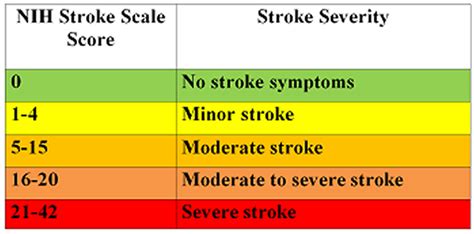
Understanding the Significance of ICD-10 in Stroke Diagnosis
Begin your journey into the intricate world of neurological care by unraveling the significance of the ICD-10 coding system. This alphanumeric system not only categorizes diseases but also plays a pivotal role in accurately diagnosing strokes. Each code provides a unique identifier, ensuring precision and clarity in healthcare communication.
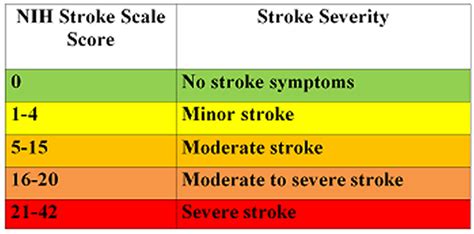
Exploring the Role of NIH Stroke Scale in Neurological Assessment
Dive deeper into the world of neurology by examining the crucial role of the NIH Stroke Scale. This standardized assessment tool offers a comprehensive evaluation of a patient's neurological status, aiding healthcare professionals in understanding the severity of a stroke. Its structured approach ensures consistency in assessments, laying the foundation for effective treatment plans.

Demystifying ICD-10 Coding for Effective Healthcare Communication
Bridge the gap between healthcare providers and accurate communication by demystifying the intricacies of ICD-10 coding. This section explores how a standardized coding system enhances collaboration, ensuring seamless information exchange among healthcare professionals. Precision in coding facilitates a clear understanding of patient conditions, fostering improved patient care.
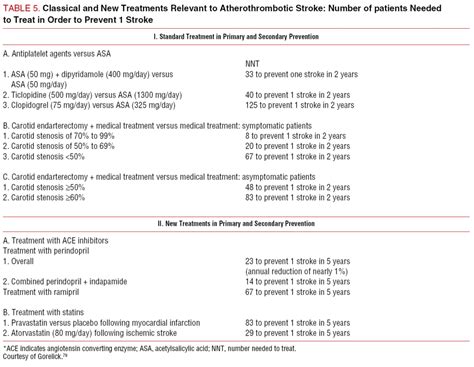
Impact of Accurate ICD-10 Coding on Stroke Patient Management
Delve into the real-world implications of precise ICD-10 coding on stroke patient management. Accurate coding not only streamlines administrative processes but also influences treatment decisions. Healthcare providers can tailor interventions based on coded information, resulting in more targeted and effective care for stroke patients.
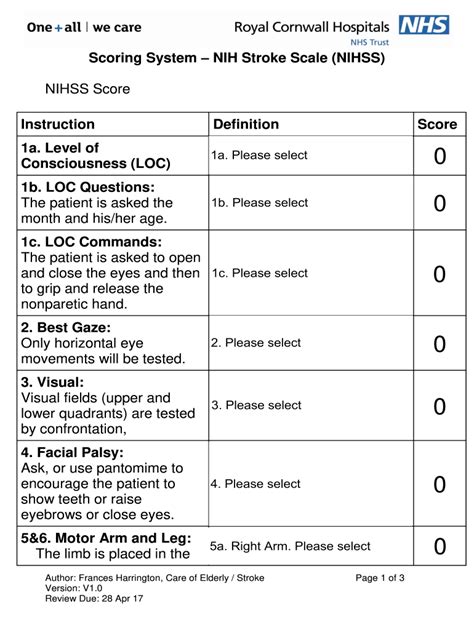
Comprehensive Guide to Utilizing NIH Stroke Scale in Clinical Practice
Navigate the nuances of incorporating the NIH Stroke Scale into daily clinical practice. This comprehensive guide outlines the step-by-step process of utilizing the scale, ensuring healthcare professionals can conduct thorough and consistent neurological assessments. The insights gained from this tool contribute to informed decision-making and personalized patient care.

Ensuring Compliance: ICD-10 Coding in Stroke Cases
Examine the importance of compliance in ICD-10 coding, specifically within the context of stroke cases. Adherence to coding standards ensures consistency and accuracy, facilitating a seamless flow of information across healthcare systems. Compliance not only mitigates errors but also establishes a foundation for reliable data exchange in stroke-related scenarios.
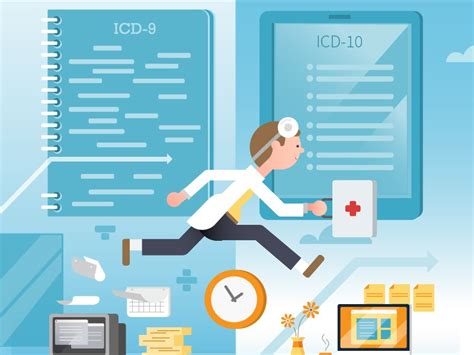
Unveiling the Link Between ICD-10 and Improved Treatment Planning
Explore the intricate connection between ICD-10 coding and enhanced treatment planning. This section sheds light on how accurate coding influences the development of effective treatment strategies for stroke patients. A clear link emerges between precise coding and the ability to tailor treatment plans that address the unique needs of individuals recovering from strokes.

NIH Stroke Scale: A Tool for Objective Neurological Evaluation
Discover the objectivity embedded in the NIH Stroke Scale as a tool for neurological evaluation. This assessment method offers a standardized and structured approach, allowing healthcare professionals to objectively evaluate and quantify the impact of a stroke on a patient's neurological functions. The results obtained guide treatment decisions, fostering a patient-centric approach in healthcare delivery.

Navigating Challenges: ICD-10 Coding in the Context of Stroke Care
Delve into the challenges that healthcare professionals may encounter in ICD-10 coding within the context of stroke care. From specific coding scenarios to potential pitfalls, this section provides insights into navigating challenges effectively. Understanding and overcoming these hurdles contribute to the overall accuracy of coded information, ensuring optimal patient care.
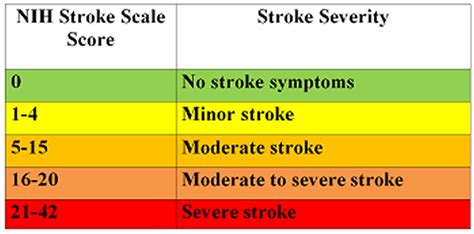
Enhancing Patient Outcomes Through ICD-10 and NIH Stroke Scale Integration
Conclude the exploration by understanding how the integration of ICD-10 coding and the NIH Stroke Scale contributes to enhanced patient outcomes. This synergy ensures that healthcare providers have a comprehensive understanding of a stroke patient's condition, leading to tailored interventions and improved overall outcomes.
Note: Images used are for illustrative purposes only.
SICD-10 NIH Stroke Scale in Professional's eye

Healthcare, a dynamic and complex ecosystem, continually evolves to meet the demands of an ever-changing world. In this intricate landscape, the ICD-10 coding system and the NIH Stroke Scale emerge as critical components, seamlessly intertwining to enhance the precision and efficiency of neurological care. The realm of healthcare is inherently rooted in the pursuit of accurate diagnoses and tailored treatment plans, and the ICD-10 coding system stands as a beacon, providing a standardized language for classifying diseases and conditions. This alphanumeric system not only streamlines communication among healthcare professionals but also plays a pivotal role in facilitating accurate reimbursement processes and contributing to epidemiological research. Its impact is particularly profound in the context of neurological care, where the need for precise coding is exemplified by the NIH Stroke Scale. This standardized assessment tool serves as a linchpin in the evaluation of stroke patients, enabling healthcare providers to objectively quantify the severity of neurological deficits. The integration of these two elements is not merely a technicality but a strategic approach to optimizing patient outcomes.

Striving for Diagnostic Precision
At the core of healthcare excellence lies the relentless pursuit of diagnostic precision. The ICD-10 coding system, with its detailed and specific codes, empowers healthcare professionals to accurately capture and convey the complexity of various medical conditions. Whether it's a cardiovascular ailment, a respiratory disorder, or a neurological event like a stroke, the ability to precisely code each scenario is paramount. As we focus our lens on the intricate realm of stroke care, the NIH Stroke Scale steps into the spotlight, providing a structured framework for assessing and scoring the neurological status of patients. By seamlessly integrating these two elements, healthcare providers are equipped with a comprehensive toolkit that not only aids in accurate diagnoses but also lays the foundation for tailored treatment strategies.

Fostering Effective Communication Among Healthcare Professionals
The ICD-10 coding system serves as a universal language in the vast and interconnected network of healthcare professionals. From physicians and nurses to administrators and researchers, this coding system acts as a bridge, fostering effective communication and collaboration. As medical records traverse various departments and specialties, the standardized codes ensure consistency, reducing the likelihood of misinterpretation or ambiguity. The significance of this streamlined communication becomes even more evident in the context of stroke care. The NIH Stroke Scale, with its structured assessment parameters, further refines this communication by providing a standardized method for conveying the neurological status of a patient. The seamless integration of these tools enhances interdisciplinary collaboration, ensuring that each healthcare professional is well-informed and aligned in the pursuit of optimal patient care.

Accurate Coding for Optimized Reimbursement
In the intricate web of healthcare financing, accurate coding is a linchpin for optimized reimbursement processes. The ICD-10 coding system, with its exhaustive list of codes and subcodes, ensures that each medical condition is meticulously documented. This not only facilitates transparent communication among healthcare professionals but also plays a pivotal role in justifying the resources expended in patient care. The financial intricacies of healthcare are intertwined with the clinical realities, and precise coding becomes especially crucial in the landscape of neurological care. The NIH Stroke Scale, as a standardized assessment tool, contributes to this accuracy by providing a quantifiable measure of the neurological deficits resulting from a stroke. The integration of these tools ensures that healthcare providers can not only deliver optimal care but also receive fair and justified reimbursement for their services.
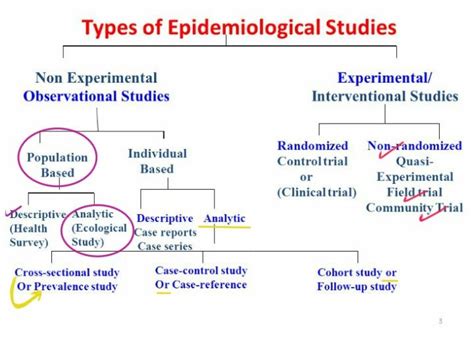
Contributing to Epidemiological Research
The vast repository of data generated through the ICD-10 coding system is a treasure trove for epidemiological research. As each medical encounter is coded with meticulous detail, a rich tapestry of information emerges, providing insights into disease prevalence, patterns, and outcomes. This wealth of data becomes particularly valuable when examining the epidemiology of stroke, a condition with multifaceted implications. The NIH Stroke Scale, as a standardized tool, further enriches this data by offering a consistent method for evaluating and scoring neurological deficits. The amalgamation of these two elements not only aids in understanding the prevalence and impact of strokes but also contributes to the development of targeted public health interventions.

Objective Quantification of Neurological Deficits
The NIH Stroke Scale stands as a beacon for objectivity in the realm of neurological evaluations. In stroke care, where the nuances of neurological deficits can significantly vary from patient to patient, having a standardized and objective tool is paramount. By utilizing a structured set of parameters, healthcare professionals can objectively quantify the severity of a patient's neurological impairment. This not only aids in accurate diagnoses but also serves as a baseline for monitoring the progress of the patient over time. The integration of the ICD-10 coding system further enhances this objectivity by providing a standardized language for documenting and conveying these neurological nuances, ensuring a comprehensive and uniform approach to patient care.

Enhancing Patient Outcomes Through Strategic Integration
At the heart of healthcare lies the unwavering commitment to enhancing patient outcomes. The strategic integration of the ICD-10 coding system and the NIH Stroke Scale serves as a cornerstone in this endeavor. By leveraging the precision of the coding system and the objectivity of the assessment tool, healthcare providers can tailor treatment strategies with unparalleled specificity. This strategic integration ensures that each patient receives not just care but care that is uniquely suited to their condition. Whether it's the
Point of Views : ICD-10 NIH Stroke Scale
The significance of
ICD-10 in healthcare cannot be overstated, as it provides a standardized framework for
classifying and
communicating diverse medical conditions.In the realm of neurological care, the
NIH Stroke Scale stands out as a crucial tool, offering a systematic approach for
assessing and
quantifying the severity of neurological deficits resulting from strokes.The integration of
ICD-10 coding and the
NIH Stroke Scale is essential for
achieving diagnostic precision, allowing healthcare professionals to accurately
capture and
convey the complexities of various stroke scenarios.Effective
communication among healthcare professionals is facilitated by the universal language provided by
ICD-10 codes, ensuring consistency and reducing the risk of misinterpretation.Accurate
ICD-10 coding is not only fundamental for transparent communication but also plays a pivotal role in
optimizing reimbursement processes, justifying resources expended in patient care.The rich data repository generated by
ICD-10 contributes significantly to epidemiological research, offering valuable insights into stroke
prevalence,
patterns, and
outcomes.The
NIH Stroke Scale plays a crucial role in the
objective quantification of neurological deficits, providing a structured and consistent method for evaluating patients' neurological status.The strategic integration of
ICD-10 coding and the
NIH Stroke Scale serves as a cornerstone in
enhancing patient outcomes, allowing for tailored treatment strategies based on precise diagnostic information.
Conclusion :As we draw the curtain on our exploration of the ICD-10 coding system and the NIH Stroke Scale, we hope this journey has provided you with valuable insights into the intricacies of neurological care. The ICD-10, with its role as a standardized language for classifying and communicating medical conditions, sets the stage for accurate and transparent healthcare discourse. Through our examination of its applications, especially in the context of neurological care, we aimed to highlight its indispensable nature in the intricacies of stroke diagnoses. Simultaneously, the NIH Stroke Scale, serving as a benchmark for assessing and quantifying neurological deficits resulting from strokes, emerged as a linchpin in the objective evaluation of patients.
As you navigate the dynamic landscape of healthcare, armed with a deeper understanding of the ICD-10 and the NIH Stroke Scale, we encourage you to apply these insights in your professional endeavors. Strive for diagnostic precision, foster effective communication, and embrace the strategic integration of these invaluable tools to enhance patient outcomes. The synergy between precise coding and objective neurological evaluations showcased in our articles represents a paradigm that contributes to the continual evolution of healthcare. Thank you for joining us on this exploration, and we trust that the knowledge gained will serve as a compass in your pursuit of excellence in neurological care.
Questions and Answer for ICD-10 NIH Stroke Scale
Q: What is the purpose of the ICD-10 in relation to the NIH Stroke Scale?
- A: The ICD-10 serves as a standardized coding system used in healthcare to classify diseases and conditions. In the context of the NIH Stroke Scale, it plays a pivotal role in providing a common language for precise communication among healthcare professionals regarding stroke diagnoses and related conditions.
Q: How does the NIH Stroke Scale contribute to stroke patient care?
- A: The NIH Stroke Scale is a standardized assessment tool designed to quantify the severity of neurological deficits in stroke patients. It assists healthcare professionals in objectively evaluating patients, guiding treatment decisions, and monitoring the progress of neurological recovery over time. Its structured approach enhances the precision of stroke patient care by providing consistent and measurable insights into the impact of the stroke on the patient's neurological functions.
Q: Can you explain the integration of ICD-10 coding and the NIH Stroke Scale in clinical practice?
- A: Certainly! The integration of ICD-10 coding and the NIH Stroke Scale in clinical practice is strategic. The ICD-10 codes capture the diagnosis and condition details, offering a standardized language for healthcare communication. Simultaneously, the NIH Stroke Scale provides a systematic framework for assessing and scoring the severity of neurological deficits due to strokes. Together, they enable healthcare professionals to deliver tailored and effective patient care, ensuring accurate documentation and communication of stroke-related information.
Q: How often is the NIH Stroke Scale used in healthcare settings?
- A: The frequency of NIH Stroke Scale use varies based on patient needs and clinical scenarios. In acute settings, it is commonly employed during the initial assessment of stroke patients to quickly determine the severity of neurological impairment. Subsequently, healthcare professionals may use the scale at regular intervals to monitor the patient's progress, guide treatment decisions, and adjust interventions based on evolving neurological status.
Q: Are there any challenges associated with ICD-10 coding and the NIH Stroke Scale?
- A: Like any system, challenges exist. Accuracy and consistency in ICD-10 coding require ongoing training and awareness due to the extensive code set. Challenges with the NIH Stroke Scale may include variations in interpretation among healthcare providers. However, efforts are continually made to address these challenges through training programs, standardization initiatives, and ongoing advancements in healthcare practices.
Label :ICD-10, NIH Stroke Scale, Healthcare Communication, Patient Outcomes
Keyword : ICD-10 NIH Stroke Scale

Uncover the intricacies of the ICD-10 NIH Stroke Scale. Enhance your neurology knowledge for precise patient care and improved outcomes.
In the complex landscape of healthcare, where precision and clarity are paramount, the ICD-10 NIH Stroke Scale emerges as a critical tool, shaping the narrative of patient care. This article delves into the intricacies of this standardized assessment, a cornerstone in the world of neurology and stroke management. From deciphering the International Classification of Diseases (ICD-10) coding system to navigating the nuances of the NIH Stroke Scale, we embark on a journey that explores the intersection of medical diagnostics and compassionate patient care. Join us as we unravel the significance of these essential components, bridging the gap between clinical precision and improved outcomes in the realm of healthcare.
Top 10 Points about ICD-10 NIH Stroke Scale :
- Understanding the Significance of ICD-10 in Stroke Diagnosis
- Exploring the Role of NIH Stroke Scale in Neurological Assessment
- Demystifying ICD-10 Coding for Effective Healthcare Communication
- Impact of Accurate ICD-10 Coding on Stroke Patient Management
- Comprehensive Guide to Utilizing NIH Stroke Scale in Clinical Practice
- Ensuring Compliance: ICD-10 Coding in Stroke Cases
- Unveiling the Link Between ICD-10 and Improved Treatment Planning
- NIH Stroke Scale: A Tool for Objective Neurological Evaluation
- Navigating Challenges: ICD-10 Coding in the Context of Stroke Care
- Enhancing Patient Outcomes Through ICD-10 and NIH Stroke Scale Integration
Several facts about ICD-10 NIH Stroke Scale

Understanding the Significance of ICD-10 in Stroke Diagnosis
Begin your journey into the intricate world of neurological care by unraveling the significance of the ICD-10 coding system. This alphanumeric system not only categorizes diseases but also plays a pivotal role in accurately diagnosing strokes. Each code provides a unique identifier, ensuring precision and clarity in healthcare communication.

Exploring the Role of NIH Stroke Scale in Neurological Assessment
Dive deeper into the world of neurology by examining the crucial role of the NIH Stroke Scale. This standardized assessment tool offers a comprehensive evaluation of a patient's neurological status, aiding healthcare professionals in understanding the severity of a stroke. Its structured approach ensures consistency in assessments, laying the foundation for effective treatment plans.

Demystifying ICD-10 Coding for Effective Healthcare Communication
Bridge the gap between healthcare providers and accurate communication by demystifying the intricacies of ICD-10 coding. This section explores how a standardized coding system enhances collaboration, ensuring seamless information exchange among healthcare professionals. Precision in coding facilitates a clear understanding of patient conditions, fostering improved patient care.

Impact of Accurate ICD-10 Coding on Stroke Patient Management
Delve into the real-world implications of precise ICD-10 coding on stroke patient management. Accurate coding not only streamlines administrative processes but also influences treatment decisions. Healthcare providers can tailor interventions based on coded information, resulting in more targeted and effective care for stroke patients.

Comprehensive Guide to Utilizing NIH Stroke Scale in Clinical Practice
Navigate the nuances of incorporating the NIH Stroke Scale into daily clinical practice. This comprehensive guide outlines the step-by-step process of utilizing the scale, ensuring healthcare professionals can conduct thorough and consistent neurological assessments. The insights gained from this tool contribute to informed decision-making and personalized patient care.

Ensuring Compliance: ICD-10 Coding in Stroke Cases
Examine the importance of compliance in ICD-10 coding, specifically within the context of stroke cases. Adherence to coding standards ensures consistency and accuracy, facilitating a seamless flow of information across healthcare systems. Compliance not only mitigates errors but also establishes a foundation for reliable data exchange in stroke-related scenarios.

Unveiling the Link Between ICD-10 and Improved Treatment Planning
Explore the intricate connection between ICD-10 coding and enhanced treatment planning. This section sheds light on how accurate coding influences the development of effective treatment strategies for stroke patients. A clear link emerges between precise coding and the ability to tailor treatment plans that address the unique needs of individuals recovering from strokes.

NIH Stroke Scale: A Tool for Objective Neurological Evaluation
Discover the objectivity embedded in the NIH Stroke Scale as a tool for neurological evaluation. This assessment method offers a standardized and structured approach, allowing healthcare professionals to objectively evaluate and quantify the impact of a stroke on a patient's neurological functions. The results obtained guide treatment decisions, fostering a patient-centric approach in healthcare delivery.

Navigating Challenges: ICD-10 Coding in the Context of Stroke Care
Delve into the challenges that healthcare professionals may encounter in ICD-10 coding within the context of stroke care. From specific coding scenarios to potential pitfalls, this section provides insights into navigating challenges effectively. Understanding and overcoming these hurdles contribute to the overall accuracy of coded information, ensuring optimal patient care.

Enhancing Patient Outcomes Through ICD-10 and NIH Stroke Scale Integration
Conclude the exploration by understanding how the integration of ICD-10 coding and the NIH Stroke Scale contributes to enhanced patient outcomes. This synergy ensures that healthcare providers have a comprehensive understanding of a stroke patient's condition, leading to tailored interventions and improved overall outcomes.
Note: Images used are for illustrative purposes only.
SICD-10 NIH Stroke Scale in Professional's eye

Healthcare, a dynamic and complex ecosystem, continually evolves to meet the demands of an ever-changing world. In this intricate landscape, the ICD-10 coding system and the NIH Stroke Scale emerge as critical components, seamlessly intertwining to enhance the precision and efficiency of neurological care. The realm of healthcare is inherently rooted in the pursuit of accurate diagnoses and tailored treatment plans, and the ICD-10 coding system stands as a beacon, providing a standardized language for classifying diseases and conditions. This alphanumeric system not only streamlines communication among healthcare professionals but also plays a pivotal role in facilitating accurate reimbursement processes and contributing to epidemiological research. Its impact is particularly profound in the context of neurological care, where the need for precise coding is exemplified by the NIH Stroke Scale. This standardized assessment tool serves as a linchpin in the evaluation of stroke patients, enabling healthcare providers to objectively quantify the severity of neurological deficits. The integration of these two elements is not merely a technicality but a strategic approach to optimizing patient outcomes.

Striving for Diagnostic Precision
At the core of healthcare excellence lies the relentless pursuit of diagnostic precision. The ICD-10 coding system, with its detailed and specific codes, empowers healthcare professionals to accurately capture and convey the complexity of various medical conditions. Whether it's a cardiovascular ailment, a respiratory disorder, or a neurological event like a stroke, the ability to precisely code each scenario is paramount. As we focus our lens on the intricate realm of stroke care, the NIH Stroke Scale steps into the spotlight, providing a structured framework for assessing and scoring the neurological status of patients. By seamlessly integrating these two elements, healthcare providers are equipped with a comprehensive toolkit that not only aids in accurate diagnoses but also lays the foundation for tailored treatment strategies.

Fostering Effective Communication Among Healthcare Professionals
The ICD-10 coding system serves as a universal language in the vast and interconnected network of healthcare professionals. From physicians and nurses to administrators and researchers, this coding system acts as a bridge, fostering effective communication and collaboration. As medical records traverse various departments and specialties, the standardized codes ensure consistency, reducing the likelihood of misinterpretation or ambiguity. The significance of this streamlined communication becomes even more evident in the context of stroke care. The NIH Stroke Scale, with its structured assessment parameters, further refines this communication by providing a standardized method for conveying the neurological status of a patient. The seamless integration of these tools enhances interdisciplinary collaboration, ensuring that each healthcare professional is well-informed and aligned in the pursuit of optimal patient care.

Accurate Coding for Optimized Reimbursement
In the intricate web of healthcare financing, accurate coding is a linchpin for optimized reimbursement processes. The ICD-10 coding system, with its exhaustive list of codes and subcodes, ensures that each medical condition is meticulously documented. This not only facilitates transparent communication among healthcare professionals but also plays a pivotal role in justifying the resources expended in patient care. The financial intricacies of healthcare are intertwined with the clinical realities, and precise coding becomes especially crucial in the landscape of neurological care. The NIH Stroke Scale, as a standardized assessment tool, contributes to this accuracy by providing a quantifiable measure of the neurological deficits resulting from a stroke. The integration of these tools ensures that healthcare providers can not only deliver optimal care but also receive fair and justified reimbursement for their services.

Contributing to Epidemiological Research
The vast repository of data generated through the ICD-10 coding system is a treasure trove for epidemiological research. As each medical encounter is coded with meticulous detail, a rich tapestry of information emerges, providing insights into disease prevalence, patterns, and outcomes. This wealth of data becomes particularly valuable when examining the epidemiology of stroke, a condition with multifaceted implications. The NIH Stroke Scale, as a standardized tool, further enriches this data by offering a consistent method for evaluating and scoring neurological deficits. The amalgamation of these two elements not only aids in understanding the prevalence and impact of strokes but also contributes to the development of targeted public health interventions.

Objective Quantification of Neurological Deficits
The NIH Stroke Scale stands as a beacon for objectivity in the realm of neurological evaluations. In stroke care, where the nuances of neurological deficits can significantly vary from patient to patient, having a standardized and objective tool is paramount. By utilizing a structured set of parameters, healthcare professionals can objectively quantify the severity of a patient's neurological impairment. This not only aids in accurate diagnoses but also serves as a baseline for monitoring the progress of the patient over time. The integration of the ICD-10 coding system further enhances this objectivity by providing a standardized language for documenting and conveying these neurological nuances, ensuring a comprehensive and uniform approach to patient care.

Enhancing Patient Outcomes Through Strategic Integration
At the heart of healthcare lies the unwavering commitment to enhancing patient outcomes. The strategic integration of the ICD-10 coding system and the NIH Stroke Scale serves as a cornerstone in this endeavor. By leveraging the precision of the coding system and the objectivity of the assessment tool, healthcare providers can tailor treatment strategies with unparalleled specificity. This strategic integration ensures that each patient receives not just care but care that is uniquely suited to their condition. Whether it's the
Point of Views : ICD-10 NIH Stroke Scale
The significance of
ICD-10 in healthcare cannot be overstated, as it provides a standardized framework for
classifying and
communicating diverse medical conditions.In the realm of neurological care, the
NIH Stroke Scale stands out as a crucial tool, offering a systematic approach for
assessing and
quantifying the severity of neurological deficits resulting from strokes.The integration of
ICD-10 coding and the
NIH Stroke Scale is essential for
achieving diagnostic precision, allowing healthcare professionals to accurately
capture and
convey the complexities of various stroke scenarios.Effective
communication among healthcare professionals is facilitated by the universal language provided by
ICD-10 codes, ensuring consistency and reducing the risk of misinterpretation.Accurate
ICD-10 coding is not only fundamental for transparent communication but also plays a pivotal role in
optimizing reimbursement processes, justifying resources expended in patient care.The rich data repository generated by
ICD-10 contributes significantly to epidemiological research, offering valuable insights into stroke
prevalence,
patterns, and
outcomes.The
NIH Stroke Scale plays a crucial role in the
objective quantification of neurological deficits, providing a structured and consistent method for evaluating patients' neurological status.The strategic integration of
ICD-10 coding and the
NIH Stroke Scale serves as a cornerstone in
enhancing patient outcomes, allowing for tailored treatment strategies based on precise diagnostic information.
Conclusion :As we draw the curtain on our exploration of the ICD-10 coding system and the NIH Stroke Scale, we hope this journey has provided you with valuable insights into the intricacies of neurological care. The ICD-10, with its role as a standardized language for classifying and communicating medical conditions, sets the stage for accurate and transparent healthcare discourse. Through our examination of its applications, especially in the context of neurological care, we aimed to highlight its indispensable nature in the intricacies of stroke diagnoses. Simultaneously, the NIH Stroke Scale, serving as a benchmark for assessing and quantifying neurological deficits resulting from strokes, emerged as a linchpin in the objective evaluation of patients.
As you navigate the dynamic landscape of healthcare, armed with a deeper understanding of the ICD-10 and the NIH Stroke Scale, we encourage you to apply these insights in your professional endeavors. Strive for diagnostic precision, foster effective communication, and embrace the strategic integration of these invaluable tools to enhance patient outcomes. The synergy between precise coding and objective neurological evaluations showcased in our articles represents a paradigm that contributes to the continual evolution of healthcare. Thank you for joining us on this exploration, and we trust that the knowledge gained will serve as a compass in your pursuit of excellence in neurological care.
Questions and Answer for ICD-10 NIH Stroke Scale
Q: What is the purpose of the ICD-10 in relation to the NIH Stroke Scale?
- A: The ICD-10 serves as a standardized coding system used in healthcare to classify diseases and conditions. In the context of the NIH Stroke Scale, it plays a pivotal role in providing a common language for precise communication among healthcare professionals regarding stroke diagnoses and related conditions.
Q: How does the NIH Stroke Scale contribute to stroke patient care?
- A: The NIH Stroke Scale is a standardized assessment tool designed to quantify the severity of neurological deficits in stroke patients. It assists healthcare professionals in objectively evaluating patients, guiding treatment decisions, and monitoring the progress of neurological recovery over time. Its structured approach enhances the precision of stroke patient care by providing consistent and measurable insights into the impact of the stroke on the patient's neurological functions.
Q: Can you explain the integration of ICD-10 coding and the NIH Stroke Scale in clinical practice?
- A: Certainly! The integration of ICD-10 coding and the NIH Stroke Scale in clinical practice is strategic. The ICD-10 codes capture the diagnosis and condition details, offering a standardized language for healthcare communication. Simultaneously, the NIH Stroke Scale provides a systematic framework for assessing and scoring the severity of neurological deficits due to strokes. Together, they enable healthcare professionals to deliver tailored and effective patient care, ensuring accurate documentation and communication of stroke-related information.
Q: How often is the NIH Stroke Scale used in healthcare settings?
- A: The frequency of NIH Stroke Scale use varies based on patient needs and clinical scenarios. In acute settings, it is commonly employed during the initial assessment of stroke patients to quickly determine the severity of neurological impairment. Subsequently, healthcare professionals may use the scale at regular intervals to monitor the patient's progress, guide treatment decisions, and adjust interventions based on evolving neurological status.
Q: Are there any challenges associated with ICD-10 coding and the NIH Stroke Scale?
- A: Like any system, challenges exist. Accuracy and consistency in ICD-10 coding require ongoing training and awareness due to the extensive code set. Challenges with the NIH Stroke Scale may include variations in interpretation among healthcare providers. However, efforts are continually made to address these challenges through training programs, standardization initiatives, and ongoing advancements in healthcare practices.
Label :ICD-10, NIH Stroke Scale, Healthcare Communication, Patient Outcomes
Keyword : ICD-10 NIH Stroke Scale
0 komentar